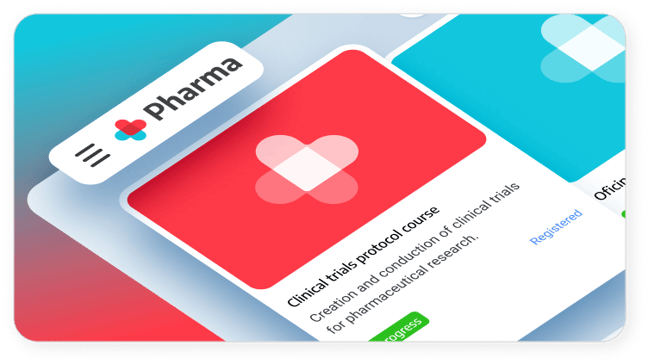E-learning (abbreviation for electronic learning) is a form of distance education with technological and audiovisual resources. It is a way of teaching and learning both for educational and corporate environments. In this article, we have prepared a practical guide with all the answers about the digital transformation that reaches the educational sphere, and especially, we will show you what e-learning is and how distance education can be used to the advantage of your company, increasing the engagement of your team.
What is e-learning?
E-learning (or electronic learning) is an educational methodology that uses the internet and digital technologies to provide a flexible and accessible learning environment. With the popularization of the web, e-learning has stood out as an effective alternative to traditional education, allowing students of different ages and backgrounds to access educational content from anywhere and at any time. This learning model can include live classes, recorded videos, interactive materials, and discussion forums, facilitating a personalized and dynamic learning experience.
In the corporate scenario, e-learning has proven to be a powerful tool for continuous education, allowing professionals to update their skills conveniently and adapted to their routines. Interest in e-learning has grown significantly in recent years, with Google recording an 89% increase in searches related to e-learning and educational software from July 2023.
How does e-learning work?
Currently, in a world of rapid changes and volatility, the way of learning and teaching is also transforming. The revolution in education is happening through e-learning, as previously noted. This innovative model offers unprecedented flexibility and accessibility, allowing students and professionals to acquire knowledge from anywhere and at any time.
We identify four fundamental pillars for the e-learning method to be effective:
- There must be mutual communication between teachers and students;
- The content must be well-structured;
- Learning must be collaborative;
- There must be assessment tools.
Different types of e-learning rely on virtual learning environments, that is, the use of online platforms, forums, videoconferences… In this way, the content is brought by teachers or subject matter experts, and students can ask questions and access materials, and everyone has a space to communicate in real-time.
Don't miss our article “Unlocking potential: the power of self-directed learning journeys in corporate training” to gain insights into how technology is revolutionizing the future of education and how you can prepare for new challenges and opportunities.
What are the benefits of e-learning?
Check out now the main advantages that this teaching model provides:
- Accessibility: Research indicates that e-learning increases accessibility by eliminating the need for physical travel to learn. This ensures that everyone, regardless of location, can access quality education. Additionally, electronic means improve accessibility for people with disabilities through customized settings on devices and systems, adapting to their specific needs.
- Flexibility and autonomy: One of the main benefits of e-learning is the flexibility and autonomy it offers students. They can choose the schedules and pace of study that best suit their needs. This freedom helps to integrate studies more efficiently into daily routines, especially for those with busy schedules.
- Individual and personalized monitoring: Learning platforms not only offer flexibility in students' routines but also provide individualized monitoring. These systems facilitate the personalized visualization of each person's progress. With Timeline International, it is possible to track the individual development of each student, allowing for a global comparison. This enables the monitoring of each student's learning objectives and identification of areas that can be improved.
- Use of technologies: Currently, e-learning benefits greatly from the use of advanced annotation tools, student interaction, and audiovisual resources to create an immersive educational experience. Annotation tools allow students to make notes directly on study materials, facilitating active and personalized learning. Real-time interaction between students and teachers promotes debates and collaboration, enriching the learning process. Additionally, the use of audiovisual resources, such as explanatory videos and simulations, makes the content more accessible and engaging, providing a more dynamic and effective learning experience.

Investing in the professional development and training of your employees is a wise decision by any manager, whether from large or small companies. Improving your team is an excellent investment that can be made to keep your employees engaged. Productivity increases along with team performance when the team realizes that they are valued, and this the company's results can achieve better outcomes.
Want to understand what e-learning is and how it can help within your company?
With Timeline International, we make your teaching and learning journey more practical and efficient! Now that you have defined your goals, take the next step: contact our specialists and explore the ideal resources to optimize your team's educational experience.





Leave a Comment